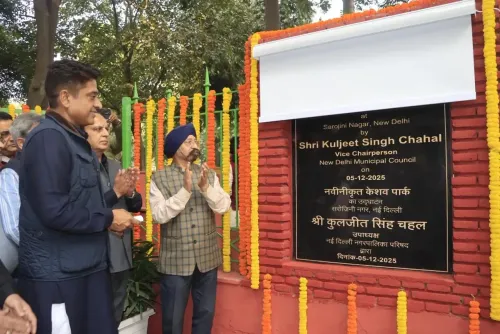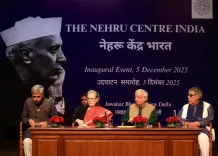How is NDMC Prepared to Combat Pollution Levels Post-Diwali?

Synopsis
Key Takeaways
- NDMC is actively tackling pollution post-Diwali.
- Significant reduction in AQI levels compared to last year.
- Collaboration with local and national government enhances effectiveness.
- Focus extends to addressing water pollution as well.
- Citizens can expect ongoing efforts for cleaner air and water.
New Delhi, Oct 21 (NationPress) In the aftermath of the Diwali celebrations that illuminated the skies of the national capital, BJP leader and Vice Chairman of the New Delhi Municipal Council (NDMC), Kuljeet Singh Chahal, stated on Tuesday that the NDMC is fully prepared and implementing extensive measures to combat the escalating pollution levels in the area.
In an interview with IANS, Chahal remarked, “This year marks the first Diwali in 27 years celebrated without restrictions, attributed to the BJP-led government. Despite the festivities, the NDMC regions, which are among the city's greenest, have successfully maintained relatively lower pollution levels. Our teams are vigilant, equipped with updated resources, and our anti-smog guns are operational. Pollution levels have seen a notable decrease compared to last year.”
He highlighted significant improvements, stating, “In previous years, areas such as Chandni Chowk, Okhla, and Rohini recorded AQI readings near 500. This year, those numbers are around 300. Anand Vihar, which once exceeded 600, is now closer to 300. This indicates real progress.”
Chahal further emphasized that the NDMC is aligned with Prime Minister Narendra Modi’s vision of a Viksit Bharat and Viksit NDMC, collaborating closely with Delhi Chief Minister Rekha Gupta.
“Our focus extends beyond air pollution; we are also addressing water pollution, particularly with Chhath Puja approaching. The citizens of Delhi can be assured that the NDMC stands with them, and we are committed to ensuring cleaner air and water,” he added.
Nonetheless, the overall Air Quality Index (AQI) in Delhi-NCR remained in the 'very poor' category, reaching 400 on Tuesday morning, just after the Diwali celebrations, according to information from the Central Pollution Control Board (CPCB).
While the overall AQI was recorded at 347, several areas displayed 'severe' category levels.
According to CPCB classifications, an AQI from 0-50 is deemed 'good', 51-100 'satisfactory', 101-200 'moderate', 201-300 'poor', 301-400 'very poor', and 401-500 falls under the 'severe' category.
Numerous localities in Delhi reported concerning AQI levels: Narela (354), Najafgarh (334), Mundka (357), Mandir Marg (325), Major Dhyan Chand National Stadium (358), Lodhi Road (334), Jawaharlal Nehru Stadium (317), Jahangirpuri (404), ITO (345), Dilshad Garden (346), Dwarka Sector 8 (333), Mathura Road (341), Bawana (418), and Anand Vihar (352), according to data from the SAMEER app developed by the CPCB.










